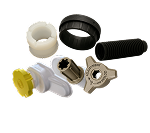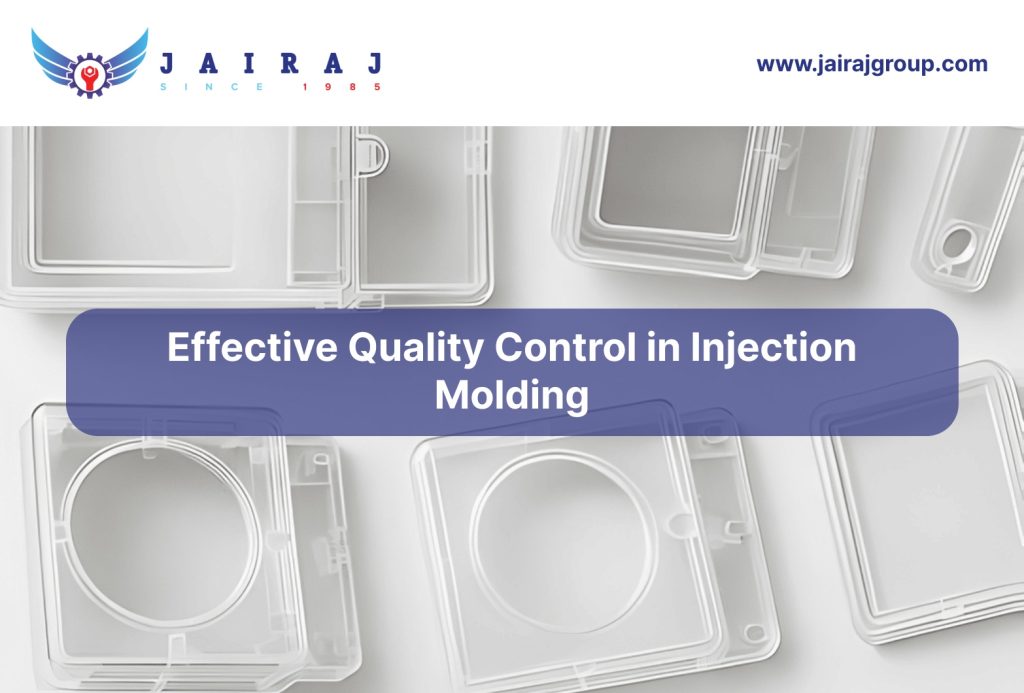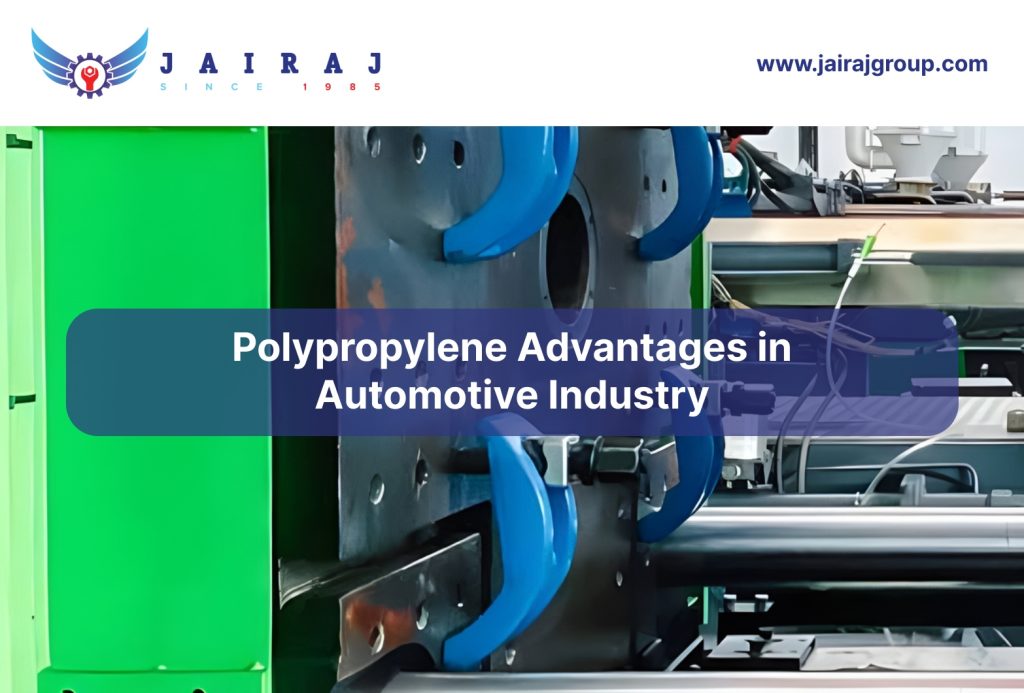The semiconductor industry relies on various materials for its production processes, one of the most significant being plastics. The question often arises, “Is plastic a semiconductor?” While plastics themselves are not semiconductors, their role in semiconductor manufacturing is indispensable.
Plastics are used for components that need to meet the rigorous demands of high-tech industries, including automotive, mobility, defense, and aerospace. In fact, the global semiconductor plastics market is expected to achieve USD 2.66 billion by 2033, underlining the critical role plastics play in the industry.
In this article, we’ll explore the role plastics play in semiconductor production, the types of plastics used, and why their selection is crucial for industries such as automotive, mobility, aerospace, and heavy equipment.
Key Takeaways
- Plastics provide cost-effective and reliable solutions for semiconductor manufacturing.
- High-performance materials like PEEK and PTFE are essential for demanding semiconductor applications.
- Plastic components reduce production downtime and improve efficiency in semiconductor processes.
- Advanced molding technologies ensure precision-engineered plastic components.
- Jairaj Group ensures compliance with international quality and safety standards.
Role of Plastic Parts in Precision Manufacturing for Semiconductors
In semiconductor manufacturing, precision plastics are essential for maintaining efficiency and reliability, particularly for industries like automotive, mobility & EVs, aerospace, and heavy equipment.
These plastics, including blow-moulded and hybrid polymer-metal assemblies, provide structural support, electrical insulation, and protection against contamination. For procurement managers, selecting the right materials ensures optimal performance in parts such as test sprockets, valves, and wafer handling systems, which are vital for smooth production processes.
To ensure high precision and contamination control in semiconductor manufacturing, Jairaj Group’s injection-molded plastics are used for critical components like test sprockets, valves, and wafer handling systems. Our plastic assembly lines ensure high strength and dimensional stability, addressing the specific demands of semiconductor manufacturing for reliable performance in precision applications.
Following this, we will discuss why plastic is the optimal choice for semiconductor components in high-tech manufacturing.
Why Plastic is the Optimal Choice for Semiconductor Components in High-Tech Manufacturing
Plastics in high-tech industries like automotive, mobility & EVs, aerospace, and defense require precision-engineered components that are durable, cost-effective, and meet high-performance standards. Here’s why plastics are the ideal choice:
1. Chemical Resistance
Plastics like PEEK and PTFE resist chemicals such as acids, solvents, and cleaning agents. This ensures long-lasting performance in automotive, heavy equipment, and aerospace applications, where components are exposed to harsh substances.
2. Low Outgassing
Low outgassing plastics, such as PEEK and PTFE, prevent contamination in sensitive semiconductor components. This property is essential in industries like aerospace and defense, where cleanliness and precision are paramount.
3. Static Dissipative
Plastics such as polycarbonate and PVDF dissipate static electricity, protecting sensitive semiconductor parts from electrostatic discharge (ESD). This is critical for automotive electronics, mobility & EVs, and heavy equipment systems.
4. High Performance in Extreme Heat & Flame-Retardant
PEEK and PTFE retain their properties under high temperatures, making them ideal for aerospace, automotive, and defense components. Additionally, some plastics are flame-retardant, providing added safety in high-risk environments.
5. Cost-Effective
Plastics offer a cost-effective alternative to metals and ceramics while maintaining durability and performance. This makes them an attractive option for industries like white goods, automotive, and heavy vehicles, where cost control is crucial.
Also Read: Top 10 Auto Parts Manufacturers in India
Next, let’s look at key steps for selecting the right plastic materials in semiconductor manufacturing.
Key Steps for Selecting the Right Plastic Materials in Precision Manufacturing for Semiconductors
Selecting the right plastic material is critical for ensuring high performance, reliability, and regulatory compliance in precision-engineered components used in industries like automotive, mobility & EVs, aerospace, heavy equipment, and defense. The following key steps guide manufacturers in making the best material selection:
1. Assess Material Properties
Evaluate key properties like chemical resistance, heat tolerance, and strength. For high-temperature applications in aerospace or heavy equipment, materials like PEEK and PTFE are ideal, while PVDF excels in chemical resistance for automotive and mobility components.
2. Evaluate Cost and Availability
Consider both performance and cost. Materials like PVC and polypropylene offer cost-effective solutions without compromising essential properties. Ensure the material is readily available to avoid production delays, especially in fast-moving industries like mobility & EVs.
3. Consider Environmental Factors
Account for exposure to chemicals, moisture, and extreme temperatures. Materials that perform well in harsh conditions, like PEEK in aerospace or PVDF in industrial environments, ensure long-term durability for components in defense, heavy equipment, and railways.
4. Ensure Compliance with Industry Standards
Ensure materials meet industry standards for safety, reliability, and performance. Compliance is crucial for sectors like defense and aerospace, where military-grade and high-performance polymer components must meet strict regulations.
Also Read: Precision Components from Advanced Polymers for Automotive and Aerospace Applications
Now, let’s examine the top 9 types of plastics used in semiconductor manufacturing for precision engineering.
9 Types of Plastics Used in Semiconductor Manufacturing for Precision Engineering
Several types of plastics are commonly used in the semiconductor industry, each offering specific properties suited to various applications. Below are the most frequently used plastics:
1. Acetal (Polyoxymethylene, POM)
Acetal is widely used in semiconductor manufacturing due to its strength, rigidity, and low friction. It is particularly suited for applications such as valves, bearings, and sprockets used in semiconductor equipment.
Operating Temperatures:
- Service temperature range: -40°C to 100°C
- Can withstand short-term exposure to temperatures up to 120°C
Properties:
- High stiffness and strength for precision parts
- Excellent dimensional stability for consistent performance
- Low friction properties, reducing wear in moving parts, critical for automotive and heavy equipment applications
- Good resistance to moisture absorption, making it ideal for environments like aerospace and defense manufacturing
2. Polycarbonate (PC)
Polycarbonate is another popular plastic used in semiconductor applications. It is known for its high impact resistance, optical clarity, and electrical insulation properties. Polycarbonate is often used for parts such as protective casings and transparent covers for semiconductor devices.
Operating Temperatures:
- Service temperature range: -40°C to 115°C
- Can withstand intermittent exposure up to 130°C
Properties:
- High impact resistance, perfect for automotive and heavy-duty equipment applications that require durable, long-lasting components
- Excellent optical clarity, allowing visibility for inspecting parts
- Good electrical insulating properties for electronics in automotive and industrial systems
- Resistant to UV degradation, suitable for outdoor applications like solar panels and aerospace systems
3. Polyvinyl Chloride (PVC)
PVC is a versatile plastic that offers good chemical resistance and electrical insulation properties. In semiconductor manufacturing, it is used for applications such as wiring insulation, semiconductor trays, and other components that require flexibility and durability.
Operating Temperatures:
- Service temperature range: -15°C to 60°C
- Short-term exposure up to 70°C
Properties:
- Excellent electrical insulating properties for protecting semiconductor components
- Good chemical resistance, critical for parts exposed to harsh environments, such as chemical rinse tanks in industrial processes
- High tensile strength and flexibility, ideal for high-performance automotive or mobility components
- Low cost, making it a viable option for mass production in white goods and appliance sectors
4. High-Density Polyethylene (HDPE)
HDPE is known for its durability and resistance to chemicals and heat. It is commonly used in semiconductor manufacturing for components such as chemical rinse tanks, piping systems, and protective covers for semiconductor devices.
Operating Temperatures:
- Service temperature range: -50°C to 120°C
- Can withstand brief exposure to temperatures up to 130°C
Properties:
- Excellent chemical resistance for use in systems that handle aggressive chemicals, common in automotive manufacturing and heavy-duty equipment
- High impact strength, reducing the risk of damage during transport or operation
- Good resistance to moisture absorption, crucial for electronic components in mobility and EVs
- Resistant to UV degradation, ensuring long-term performance in outdoor applications
5. Polypropylene (PP)
Polypropylene offers excellent chemical resistance, low moisture absorption, and high strength. It is used for applications such as trays, containers, and parts that need to withstand high temperatures and exposure to chemicals.
Operating Temperatures:
- Service temperature range: -20°C to 110°C
- Can withstand intermittent exposure up to 120°C
Properties:
- Excellent chemical resistance, essential for components in heavy equipment, automotive, and aerospace industries
- Low moisture absorption, preventing swelling and ensuring long-term reliability in industrial environments
- High tensile strength and durability, providing longevity to automotive and mobility components
- Resistant to high temperatures, suitable for applications in hot environments such as aerospace and industrial systems
6. Polyvinylidene Fluoride (PVDF)
PVDF is used in semiconductor applications due to its excellent chemical resistance and high temperature tolerance. It is commonly used for piping systems, electrical insulators, and seals in semiconductor production lines.
Operating Temperatures:
- Service temperature range: -40°C to 150°C
- Can withstand short-term exposure up to 175°C
Properties:
- Outstanding chemical resistance, ensuring long-term use in demanding industries like defense and aerospace
- High temperature resistance, making it suitable for semiconductor components exposed to extreme conditions
- Excellent electrical insulation properties for use in automotive and mobility electronics
- Low flammability and low smoke emission, enhancing safety in defense and aerospace applications
7. Polyetheretherketone (PEEK)
PEEK is a high-performance plastic known for its strength, chemical resistance, and ability to withstand extreme temperatures. It is often used in semiconductor applications such as wafer handling parts and robotic arm ends.
Operating Temperatures:
- Service temperature range: -50°C to 250°C
- Can withstand continuous exposure up to 260°C
Properties:
- High strength and rigidity, perfect for heavy-duty industrial applications like earth movers and construction equipment
- Exceptional chemical resistance for automotive, heavy equipment, and mobility systems
- Superior thermal stability for handling high-temperature conditions in aerospace, automotive, and defense
- Low outgassing, ensuring cleanroom compatibility for high-tech industries like semiconductor manufacturing and aerospace
8. Polytetrafluoroethylene (PTFE)
PTFE is famous for its chemical resistance and low friction properties. In semiconductor manufacturing, PTFE is used for applications such as seals, gaskets, and piping systems where resistance to chemicals and high temperatures is essential.
Operating Temperatures:
- Service temperature range: -200°C to 260°C
- Can withstand short-term exposure up to 300°C
Properties:
- Extremely low friction coefficient, reducing wear and tear in components like robotic arms in heavy equipment or automotive manufacturing
- Outstanding chemical resistance, ensuring reliability in harsh conditions found in industrial and aerospace systems
- High thermal stability, suitable for extreme heat environments in automotive and industrial applications
- Non-stick properties, reducing buildup in equipment, especially in precision-engineered systems
9. Polyetherimide (PEI)
PEI is a high-performance plastic that combines strength, thermal stability, and chemical resistance. It is commonly used for components such as electrical insulators, wafer handling parts, and test sprockets in semiconductor production.
Operating Temperatures:
- Service temperature range: -50°C to 170°C
- Can withstand intermittent exposure up to 190°C
Properties:
- High strength and stiffness, ensuring precision in automotive and industrial components
- Excellent thermal stability, making it a reliable choice for aerospace and heavy equipment parts exposed to high heat
- Good electrical insulating properties, critical for automotive and mobility electronics
- High resistance to chemical degradation, ensuring long-lasting performance in demanding industrial environments
Also Read: How to Choose the Right Plastic Product Supplier for Automotive & Industrial Components
Next, we will highlight 15 key applications of plastics in semiconductor production.
15 Key Applications of Plastics in Semiconductor Manufacturing
Plastics play a crucial role in semiconductor manufacturing, supporting precision-engineered components in industries like automotive, aerospace, and defense. Here are key applications highlighting their importance in durable, high-reliability components.
1. Test Sprockets
Plastics like POM and PEI are used in test sprockets to secure semiconductor components during testing. These materials offer the strength and precision required for automotive and heavy equipment applications, where durability under stress is essential.
2. Valves
Chemical-resistant plastics such as PVDF and PTFE are commonly used in valves that control the flow of chemicals and gases in semiconductor production lines. These materials ensure longevity and performance in industries like aerospace and industrial manufacturing, where safety and chemical resistance are paramount.
3. Seals
Plastics like PTFE and PEEK are used in seals to prevent leaks, ensuring the integrity of manufacturing environments. This is especially crucial in high-performance sectors such as defense and aerospace, where seal failure could compromise the entire system.
4. Bearings
Polypropylene and polycarbonate are used in bearings to enable smooth movement and reduce friction in semiconductor machinery. In applications like heavy equipment and automotive, these plastics ensure efficient operation even under high-load conditions.
5. Circuit Boards
Materials such as PVC and PEI are used in circuit boards, providing electrical insulation and protection against damage. These are essential in industries like mobility & EVs and aerospace, where precision and reliability in electrical components are critical.
6. Chip Carriers
Plastic chip carriers made from PEEK and POM are used to hold semiconductor chips during production, preventing contamination. This ensures the protection and integrity of sensitive semiconductor components in industries like automotive and industrial electronics.
7. Robotic Arm Ends
Plastics such as polycarbonate and PEEK are used in robotic arm ends to enable precise movement in semiconductor manufacturing. These materials are integral to automated systems in industries like aerospace, automotive, and heavy equipment, where precision and reliability are critical.
8. Chemical Rinse Tanks
HDPE and PVDF are commonly used in chemical rinse tanks to clean semiconductor components during production. These plastics provide chemical resistance and durability, essential in manufacturing environments for industries such as industrial equipment and mobility & EVs.
9. High Purity Piping Systems
Plastics like PVDF and PTFE are used in high-purity piping systems to safely transport chemicals in semiconductor production. These materials are vital for sectors such as aerospace, defense, and heavy equipment, where contamination-free environments are essential.
10. Gas Delivery Systems
PVDF and PTFE are also used in gas delivery systems, ensuring the precise and safe delivery of gases in semiconductor fabrication. These materials are critical for maintaining system integrity in industries like aerospace and automotive, where exact specifications are required.
11. Semiconductor Trays & Boxes
PVC and POM are used to create trays and boxes for storing and transporting semiconductor wafers and chips. These plastics offer durability and reliability, important for sectors like automotive and heavy equipment that rely on secure and efficient handling of sensitive components.
12. Electrical Insulators
Polycarbonate and PEEK are used as electrical insulators in semiconductor components to prevent unwanted electrical conductivity. These materials ensure safety and efficiency in critical systems across industries such as mobility & EVs, aerospace, and defense.
13. Wafer Handling Parts
PEEK and PTFE are used in wafer handling parts to protect sensitive semiconductor wafers during transportation and processing. In high-tech industries like aerospace and automotive, these materials provide the necessary strength and stability for delicate tasks.
14. Wet Benches & Workstations
Polypropylene and HDPE are used in wet benches and workstations for semiconductor processing, offering chemical resistance and durability. These materials are crucial in manufacturing settings, particularly in industrial processes and mobility & EVs, where high performance is required.
15. Flexible Tubing
PVC and PTFE are used in flexible tubing to transport chemicals, gases, and liquids in semiconductor manufacturing. These materials ensure safe and efficient transportation in industries such as automotive, industrial, and aerospace, where flexibility and reliability are key.
Also Read: Automotive Interior & Exterior Plastic Parts Manufacturing: Trends and Innovations in 2025
Selecting the Right Plastic Materials for Semiconductor Manufacturing
Choosing the right plastic materials for semiconductor manufacturing is crucial for ensuring high performance, reliability, and cost-effectiveness. At Jairaj Group, we specialize in providing precision-engineered plastic solutions that cater to industries such as automotive, aerospace, defense, mobility & EVs, and heavy equipment.
With advanced manufacturing facilities across Faridabad, Rudrapur, Aurangabad, Manesar, and Sanand, we deliver high-quality components designed for the most demanding industrial applications.
Why choose Jairaj Group?
- Plastic Bellows & Struts, Hand Grips & Mobility Plastic Solutions: Ideal for flexible and durable components in automotive, heavy-duty vehicles, and semiconductor environments, produced through blow molding and extrusion molding technologies.
- Precision Components from Advanced Polymers: High-performance parts made from PEEK and polycarbonate, designed for aerospace, defense, and semiconductor applications to withstand extreme temperatures and harsh environments.
- Roto Moulding Components: Strong, long-lasting components for engineering tools and aerospace applications, produced through rotational molding, ensuring high strength for semiconductor equipment and heavy machinery.
- Solar Plastic & Braking System Components: Injection molding is used to create durable solar components and braking system parts that meet the strict requirements of semiconductor manufacturing, offering high durability and thermal resistance.
- Advanced Materials Like TPE, TPU, and Nylon: TPE/TPV and Nylon are used in semiconductor manufacturing for dust covers, fuel line connectors, and general assembly parts, ensuring high strength, chemical resistance, and reliability in production environments.
Partner with Jairaj Group for precision-engineered plastic components that support the efficiency, durability, and reliability needed in semiconductor manufacturing and beyond. With over 35 years of experience, we deliver solutions that exceed expectations in industries ranging from automotive to industrial applications.
Conclusion
Plastics are essential in semiconductor manufacturing, offering key benefits like chemical resistance, low outgassing, and high performance in extreme conditions. Choosing the right plastic material ensures reliable, high-performance components for applications such as semiconductor trays, gas delivery systems, and robotic arms. Here’s how partnering with the right plastic supplier benefits manufacturers in selecting precision-engineered plastics for semiconductor manufacturing:
- Plastics reduce production costs compared to metals and ceramics.
- High-performance plastics like PEEK and PTFE offer long-lasting reliability.
- Precision-engineered plastics meet industry standards for safety and performance.
At Jairaj Group, we specialize in providing precision-engineered plastic solutions, utilizing advanced injection molding and extrusion molding technologies. Our products, such as brake system components and precision polymers made from PEEK and polycarbonate, are designed to meet the rigorous demands of sectors like automotive, aerospace, and heavy equipment.
Get in touch with Jairaj Group for precision-engineered plastic components for your semiconductor manufacturing processes.
FAQs
1. What are the key benefits of using plastics in semiconductor manufacturing?
Plastics offer chemical resistance, low outgassing, high durability, and heat resistance, making them essential for precision components in semiconductor manufacturing.
2. How do plastic components contribute to semiconductor manufacturing efficiency?
Plastic components reduce production costs, increase reliability, and ensure long-lasting performance in semiconductor production, enhancing overall manufacturing efficiency and minimizing downtime.
3. What materials are best for high-performance semiconductor components?
Materials like PEEK, PTFE, and polycarbonate offer the heat resistance, chemical stability, and durability needed for high-performance semiconductor components in challenging environments.
4. How do plastics meet the stringent requirements of the aerospace and defense sectors?
Plastics like PEEK and polycarbonate are chosen for their strength, durability, and compliance with aerospace and defense standards, ensuring reliable, high-performance components in critical applications.
5. How to ensure compliance with industry standards in plastic components?
Make sure to adhere to ISO, IATF, and CE certifications, ensuring all plastic components meet global safety, quality, and performance standards for semiconductor manufacturing.
6. How does plastic material selection impact the performance of semiconductor components?
Selecting the right plastic ensures durability, heat resistance, and chemical stability, enhancing the longevity and performance of semiconductor components under extreme conditions.






